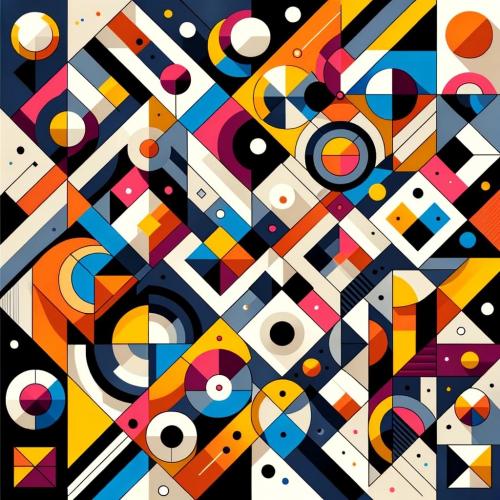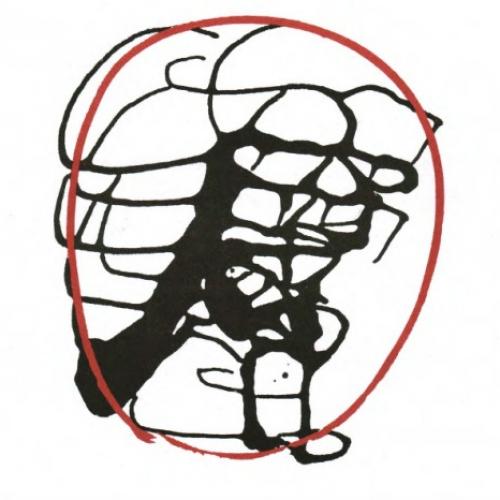Copy Link
Add to Bookmark
Report
NL-KR Digest Volume 07 No. 18

NL-KR Digest (Thu Oct 4 12:08:18 1990) Volume 7 No. 18
Today's Topics:
Abstract for Syntax Workshop, 9 October, 7:30 p.m.
Machine Translation
CFP: JOURNAL OF IDEAS
Submissions: nl-kr@cs.rpi.edu
Requests, policy: nl-kr-request@cs.rpi.edu
Back issues are available from host archive.cs.rpi.edu [128.213.5.17] in
the files nl-kr/Vxx/Nyy (ie nl-kr/V01/N01 for V1#1), mail requests will
not be promptly satisfied. If you can't reach `cs.rpi.edu' you may want
to use `turing.cs.rpi.edu' instead.
BITNET subscribers: we now have a LISTSERVer for nl-kr.
You may send submissions to NL-KR@RPIECS
and any listserv-style administrative requests to LISTSERV@RPIECS.
-----------------------------------------------------------------
To: nl-kr@cs.rpi.edu
Date: Thu, 4 Oct 90 08:47:37 PDT
From: ingrid@russell.Stanford.EDU (Ingrid Deiwiks)
Subject: Abstract for Syntax Workshop, 9 October, 7:30 p.m.
SYNTAX WORKSHOP
Complex Predicates in LFG
Miriam Butt, Michio Isoda, Peter Sells
(mutt@csli.stanford.edu, isoda@csli.stanford.edu,
sells@csli.stanford.edu)
Tuesday, 9 October, 7:30 p.m.
Cordura 100
This is a report on work conducted at CSLI over the summer by a group
of people, including the authors. We will primarily talk about the
relation in LFG between f-structure and a(rgument)-structure, which we
have tried to formalize, by looking at certain complex predicates in
Urdu. The standard account of complex predicates (e.g., Ishikawa
(1985) for Japanese) is that they are monoclausal in c-structure but
biclausal in f-structure and a-structure. Urdu presents some complex
predicates of just this type. However, there are others that seem to
require monoclausal c- and f-structures but biclausal a-structures;
these are the ones we will focus on.
------------------------------
To: nl-kr@cs.rpi.edu
From: Tony McEnery <mcenery@comp.lancs.ac.uk>
Newsgroups: comp.ai.nlang-know-rep
Subject: Machine Translation
Date: 4 Oct 90 15:33:50 GMT
Reply-To: Tony McEnery <mcenery@comp.lancs.ac.uk>
NEW JOURNAL ANNOUNCEMENT
Applied Computer Translation
Keep Up To Date With Machine Translation
And Computer Aided Language Learning
Applied Computer Translation (ACT) aims to encourage an
inter-disciplinary perspective on this all important issue, by
bringing together concepts from linguistics, computer science and
related fields, in an easily understandable form.
Topics covered include knowledge based and probabilistic
machine translation, computer aided language learning and corpus
based
applications. News and reviews provide informed insight into
developments in the field, as well as providing a useful channel for
information.
Applications from the mainframe to the micro are covered,
ranging from research projects at an international level, to
activities in the classroom.
The journal gives high quality academic and industrial opinion
in a digestible form - articles and features will work together to
provide not only new information, but also background to areas
already
covered, to facilitate wider understanding.
Within the journal, language professionals, linguists,
computer scientists, industrialists and those with any interest in
machines and language can find a forum for active, intelligent
discussion on this important topic.
CONTRIBUTIONS INCLUDE :
Research Papers at the very forefront of technology.
Application Reports - short papers covering a wide
area, from personal comments
to positional papers to previews
of forthcoming work.
Case Studies - reviews of major applications of
computer translation in any
environment.
(All Above REFEREED)
Reviews of books, software and new equipment.
EDITORS :
General Editor :
Tony McEnery,
UCREL,
Department Of Computing,
Engineering Building,
Lancaster University,
Bailrigg,
Lancaster,
LA1 4YR,
ENGLAND.
email mcenery@uk.ac.lancs.comp
Far East Editor :
Professor Jun-Ichi Tsujii,
c/o Motojiro Tsujii,
78 Un'rin'in cho,
Kita-Ku,
Kyoto,
Japan 603.
(Visiting Professor at UMIST,
PO Box 88,
Manchester,
M60 1QD,
ENGLAND)
email : tsujii@uk.ac.umist.ccl
North American Editor :
Dr. Ezra Black,
Continuous Speech Recognition Group,
Research Division,
IBM Thomas J. Watson Research Centre,
PO Box 704,
Yorktown Heights,
New York 10598,
USA.
email : BLACK@almaden.ibm.com
General Board :
Dr. D. Arnold
(Linguistics, University Of Essex, UK)
Dr. W. Black
(Computational Linguistics, UMIST, UK)
Prof. J Durand
(Linguistics, Salford University, UK)
John Higgins
(School Of Education, Bristol University,UK)
Ian Kelly
(Chairman, British Computer Society
Special Interest Group On Natural
Language Translation)
Prof. F. Knowles
(Modern Languages, Aston University, UK)
Tom Routen
(Dept. Maths Stats & Computing,
Leicester Polytechnic, UK)
Prof. W. Skala
(Department Of Informatics And Computing,
Pilzen Institute Of Technology,
Czechoslovakia)
SUBSCRIPTION RATES :
Volume 1 :
Personal 22.50 pounds (45 dollars)
Library/Corporate 45 pounds (90 dollars)
Volume Two Onwards :
Personal 30 pounds (60 dollars)
Library/Corporate 60 pounds (120 dollars)
Prices Include Postage/Airmail
Send Cheques/PO's/Money Orders
OR
MASTERCARD/EUROCARD/VISA/ACCESS (number, expiry date
& signature)
To :
Sigma Press,
1 South Oak Lane,
Wilmslow,
Cheshire,
SK9 6AR,
UK.
SUBMISSIONS :
You are invited to submit contributions to the
editors.
The normal length of an article is 7,00 words, though longer
articles may be accepted. You should write concisely but not at the
expense of clarity, bearing in mind that the referees report will be
based on a contributions length relative to its content.
An acknowledgement of receipt will normally be sent within
seven days. A publication decision should be made within six weeks
of
the receipt of a contribution. Our policy is to ensure rapid
publication of accepted contributions so that their currency is
maintained.
It is imperative that all articles are either sent in ascii
format by electronic mail, or on a 5.25/3.5 inch disk in a PC format.
Several word processor formats are acceptable though straight ascii
is
simplest. Under extenuating circumstances manually typed articles
will
be accepted.
Each article must be accompanied by an abstract. Please note
that electronic submissions save the waste of paper.
More detailed notes on guidance for contributors and a style
sheet are available from the publishers on request.
------------------------------
To: nl-kr@cs.rpi.edu
Date: 22 Sep 90 01:00:31 EDT
From: Elan Moritz <71620.3203@CompuServe.COM>
Subject: CFP: JOURNAL OF IDEAS
++++++++++++++++++++++++++++++++
ANNOUNCEMENT and CALL for PAPERS
+++++++++++++++++++++++++++++++
for
VOLUME 2
of the
JOURNAL of IDEAS
The first issue of the Journal of Ideas
was recently published. Below is the
introduction to the Journal. The
abstracts of papers in the first issue
will appear in a subsequent digest.
The Journal of Ideas is aiming at publishing
papers in its relevant areas within 3-6 months of
receipt of papers.
Regular papers and proposals for invited papers
are welcome and should be addressed to:
Dr. Elan Moritz, Editor
Journal of Ideas,
The Institute for Memetic Research, Inc.
P. O. Box 16327
Panama City, Florida 32406- 1327
or
moritz@well.bitnet
moritz@well.sf.ca.us.bitnet
or via internet
moritz@well.sf.ca.us
or
71620.3203@compuserve.com
+++++++++++++++++++++++++++++++++++++++++++++++
personal subscriptions (in the U.S) are available
at $46 year (includes Volume 1 #1 described below
and 4 issues of Volume 2 to appear in 1991).
limited copies of the first issue described below
are available for $20.
+++++++++++++++++++++++++++++++++++++++++++++++++
Journal of Ideas
The Journal of Ideas is an archival forum for discussion of existing
and original ideas and concepts. Its purpose is to circulate and
nurture inquiry that focuses attention on the evolution and spread of
ideas, on the process of discovery as well as the creative process,
and on biological and electronic implementations of idea/knowledge
generation and processing.
* * * * * * * * * * * * * * * * * * * * * * * * * * * * * * * * * *
Elan Moritz Editor
Patricia S. Smith Managing Editor
* * * * * * * * * * * * * * * * * * * * * * * * * * * * * * * * * *
Editorial Advisory Board
++++++++++++++++++++++++
R. Wilburn Clouse
Department of Educational Leadership, Vanderbilt University
Peter A. Kiss
Sentar, Inc., Hunstville, Alabama
Matthew Witten
Center for High Performance Computing, University of Texas at Austin
Manuscripts should be sent in duplicate to the Managing Editor,
Journal of Ideas, IMR, Box 16327, Panama City, Florida, 32406-1327.
Manuscripts and correspondence can also be sent via e-mail to BITNET:
moritz@well, and to INTERNET: 71620.3203@compuserve.com, or,
moritz@well.sf.ca.us
Subscriptions to the Journal of Ideas may be obtained from the
Institute for Memetic Research. Annual personal subscription prices
are US$ 46 for U.S. and Canadian subscribers, and US$ 72 for
overseas subscribers. Annual corporate and institutional subscription
rates are US$ 138 for U.S. and Canadian subscriptions and US$ 164 for
overseas subscriptions. Subscription orders should be forwarded with
correct payment by check or money order (drawn on a U.S. bank).
Single issues are available for US$ 20. Inquiries concerning
back-issues should be addressed to the Institute for Memetic
Research. Orders may also be placed through EBSCO Subscription
Services in Dumont, New Jersey, tel. (201) 387-2660, fax (201)
387-0671.
The Journal of Ideas and the Institute for Memetic Research, Inc.
will assume no responsibility for opinions and statements advanced by
authors publishing in the Institute of Memetic Research's
publication. Permission to quote from this journal is permitted with
acknowledgement of source. Reprinting lengthy excerpts require the
Institute's permission as do republication and storage in any form
(written, translated, electronic, optical, etc.).
The Journal of Ideas, ISSN 1049-6335, is published quarterly by the
Institute for Memetic Research, Inc. P. O. Box 16327, Panama City
Florida 32406-1327. Copyright [(c)] 1990 by the Institute for Memetic
Research, Inc.
*******************************
*******************************
Welcome to the Journal of Ideas
*******************************
*******************************
In 1608 Hans Lippershey (aka Lippersheim) placed one spectacle
lens in front of another and pointed this configuration at a distant
building. To his amazement he noticed that the building top appeared
much closer and larger than he could see before; furthermore, he
could see the details of the building top quite clearly. On October
2, 1608 he offered this device (which he called 'looker') to the
Estates of Holland for 900 florins. Lippershey's looker is known
nowadays as a telescope. Through Jacques Bovedere of Paris, the
telescope was made known to Galileo Galilei. Galileo, in turn,
constructed his own telescope and pointed it towards the moon,
Jupiter, and other celestial objects. Galileo's discoveries of the
irregular surface of the moon, sunspots on the sun, moons of Jupiter,
and a host of other unexpected astronomical phenomena, challenged the
Ptolmeic astronomical theories and the official views of man's
position in the universe. Galileo's observations ultimately led to
what we now recognize as modern science while Galileo himself was
subjected to continuing house arrest.
On reviewing the fascinating sequence of events leading to
Galileo's discoveries, one immediately recognizes the simple two lens
experiment, conducted by Lippershey, as the singular most important
event for modern astronomy, and perhaps for modern science. This is
so because it is the one event that provided a simple tool which
generated uncontestable direct evidence about nature and the
universe. It was the telescope that provided data supporting or
refuting systems of beliefs held for many centuries.
A number of natural questions arise. Why did Lippershey place
the one lens in front of the other at the time that he did? Where did
that idea come from? If we reflect upon these questions and bring
into the foreground the fact that spectacle lenses were known for
over three centuries (before Lippershey) and that the magnifying
effects of glass and water-filled glass spheres were known for over
1300 years, another question comes to mind. Why did it take as long
as it did to think of and do Lippershey's experiment?
Events such as Lippershey's invention of the telescope, and
Galileo's use of the telescope to discover craters on the moon, point
to a class of underlying phenomena that we all participate in
continuously, namely the awareness, development, use and propagation
of ideas. Until very recently, attempts to understand the mechanics
and dynamics of 'ideas' (as entities by themselves) have been
limited to philosophical, sociological and perhaps psychological
speculations. Almost all discussions of 'ideas' revolve about truth
values (i.e. true/false) of particular ideas, their meaning and their
impact (i.e., how many people subscribe to an idea or a collection of
ideas and what did they do as result of believing that particular
idea). To date, little discussion has taken place on objective,
quantitative aspects of 'ideas' and 'idea-dynamics'.
This journal, The Journal of Ideas, is being launched to
stimulate thinking about the very nature of 'ideas' as rigorously
quantifiable objects. The Journal aims to provide a forum for
disciplined presentation of formal results in an archival scholarly
format. Basically, it is our view that ideas are discrete objects
that can combine, mutate, spread, and die, much like the many living
biological entities we are familiar with.
In this issue we have assembled a collection of invited papers
by distinguished investigators. J. T. Bonner (Princeton University,
author of "The Evolution of Culture in Animals") presents an analysis
of cultural evolution from a biological point of view. Bonner
discusses cultural evolution in terms of selection of units of
behavioral information, individual memory, and collective memory of
the species. He argues that cultural changes (in short time spans)
rival genetically derived changes that take hundreds of millions of
years. D. Brooks (University of Toronto, co-author of "Evolution as
Entropy") and D. McLennan extend the unified theory of biology which
is based on entropy analysis of biological systems as informational
systems. Their unified theory of biological evolution argues for
production of historically constrained, spontaneously stable, complex
structures and hierachies. S. Salthe (Brooklyn College, author of
"Evolving Hierarchical Systems" and "Complexity and Change in
Biology") presents a related biological-entropy based approach to
infodynamics - the study of uncertainties. Salthe's framework allows
discussion of external (historical) influences on dissipative
structures and prediction of the effects of stored information. H.
K. Henson (first president of the L-5 society and an activist in
national space policy) and A. Lucas present a discussion of evolution
and creationism in the context of memes (a particular category of
ideas). Their paper explores the
question of why humans have beliefs at all and raises the intriguing
hypothesis that there may exist physical meme receptor sites with
subtantial stability. R. Wiley (author of the book "BioBalance: The
Acid/Alkaline Solution To The Food-Mood-Health Puzzle") presents a
rigorous theory for the metabolic roots of consciousness that tracks
metabolic inputs leading to correlations with metabolic and cognitive
functions and dysfunctions. An interesting, and potentially highly
significant aspect of R. Wiley's theory is the use of the relative
acidity/alkalinity of venous plasma pH as the synoptic indicator of
metabolic health and consequently mental/functional health. General
metabolite reaction-diffusion equations, specializing to hermitian
interactions are presented. E. Moritz introduces a rigorous
foundation for memetic science. Moritz's paper provides a review of
the major historical theories of ideas with attention to contemporary
work of quantitative culture theorists of the past two decades. In
addition to a wealth of key references, Moritz establishes a firm
basis for a calculational science of ideas based on intrinsic and
extrinsic properties of memes.
The papers collected in this issue, while initially appearing as
a diverse ensemble, in fact touch on various aspects that we hope to
bring together in the Journal. Ideas and language appear to be
present in a developed form only in humans. They are phenotypic
artifacts of the state of cognitive abilities achieved by humans as a
result of a biologically and culturally adaptive evolution. We hope
these papers serve as a basis for and stimulate principled discussion
for a comprehensive science that includes these diverse aspects.
Since the topic of a science of ideas (as differentiated from
philosophy) is new and uncharted, we expect that a variety of points
of view and approaches will be taken. We anticipate that some topics
and papers will generate heated discussions, as well as provide
substantive advances in areas such as cognitive sciences, psychology,
biology, sociology, artificial intelligence, artificial life,
economics, computational linguistics, knowledge engineering, and a
host of existing and new interdisciplinary fields.
We stress that the Journal and its publisher will maintain the
principle of scientific objectivity regarding publications.
Accordingly, all views expressed in the Journal are solely those of
the author(s) of individual papers. Correspondence pertaining to
individual author's positions should be addressed to the relevant
author.
We encourage individuals who have interests in the topic of the
science of ideas to submit papers for publication in this journal;
while no standards can be set on a new science, it is expected that
papers published in JoI will be of high professional quality. Papers
submitted will be reviewed for content, technical accuracy, and
novelty. We encourage readers to let their acquaintances know about
the Journal as both a source of new information and a forum for
discussion.
Judging from correspondence received, and the great interest
expressed, we are confident that many new and useful ideas will be
presented here, and that JoI will act as a catalyst for discovering
how ideas interact with other ideas and how the process of creativity
can be made more fruitful and accessible. In particular, we see an
emerging impact of this area on disciplines that require
understanding of knowledge representation and dynamics, and on
electronic based memes (such as electronic viruses, bacteria and
worms), artificial intelligence, and genetic algorithms. We also see
the distinct potential for memetic science (the science of ideas) to
shed light on neural structures and to call attention to manditory
architectures in the human brain (which would be required to support
idea-processing and dynamics). It is distinctly possible that
results obtained here will shed light on mental functions and
dysfunctions such as schizophrenia.
Ultimately, we look forward to being able to explain in detail
why it took 300 years to go from a single spectacle lens to the two
lens telescope, and to use the science of ideas, memetic science, the
same way molecular biologists are able to piece together DNA and RNA
molecules to create new structures. We hope that in the process, we
will learn how to look at ideas that already exist and to piece them
together effectively, so that what would otherwise take centuries,
will be accomplished in years.
Elan Moritz, Editor
Patricia S. Smith, Managing Editor
------------------------------
End of NL-KR Digest
*******************























